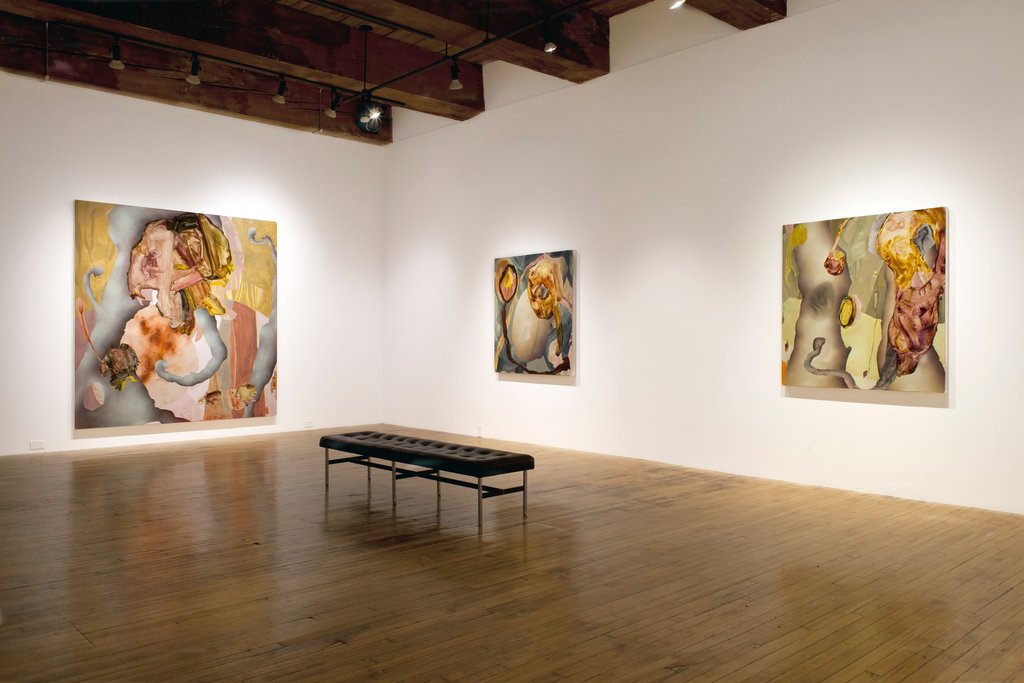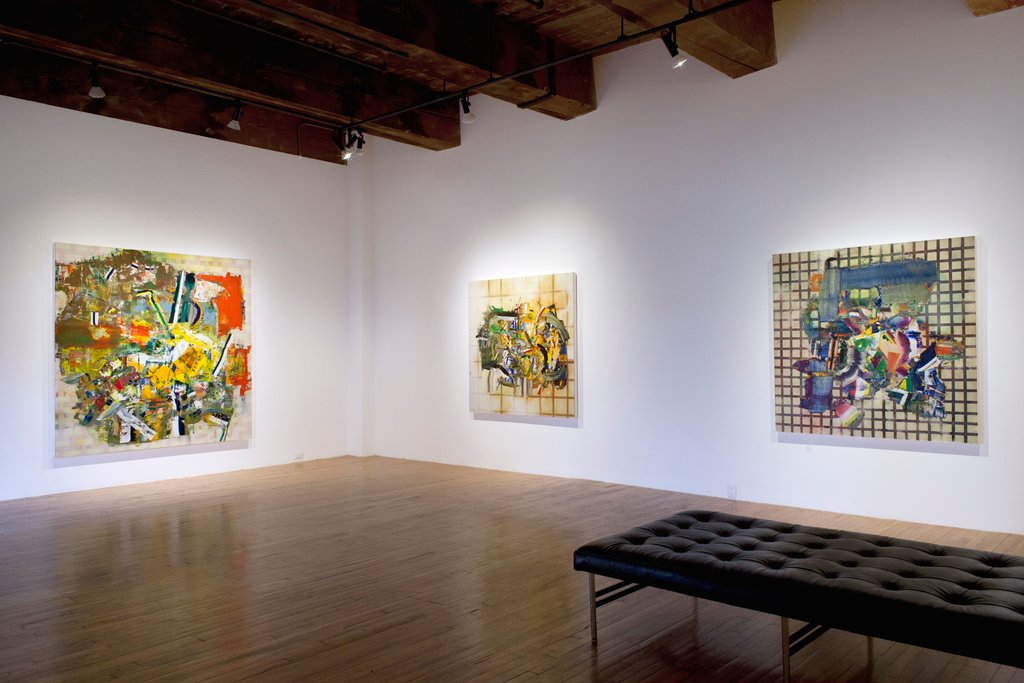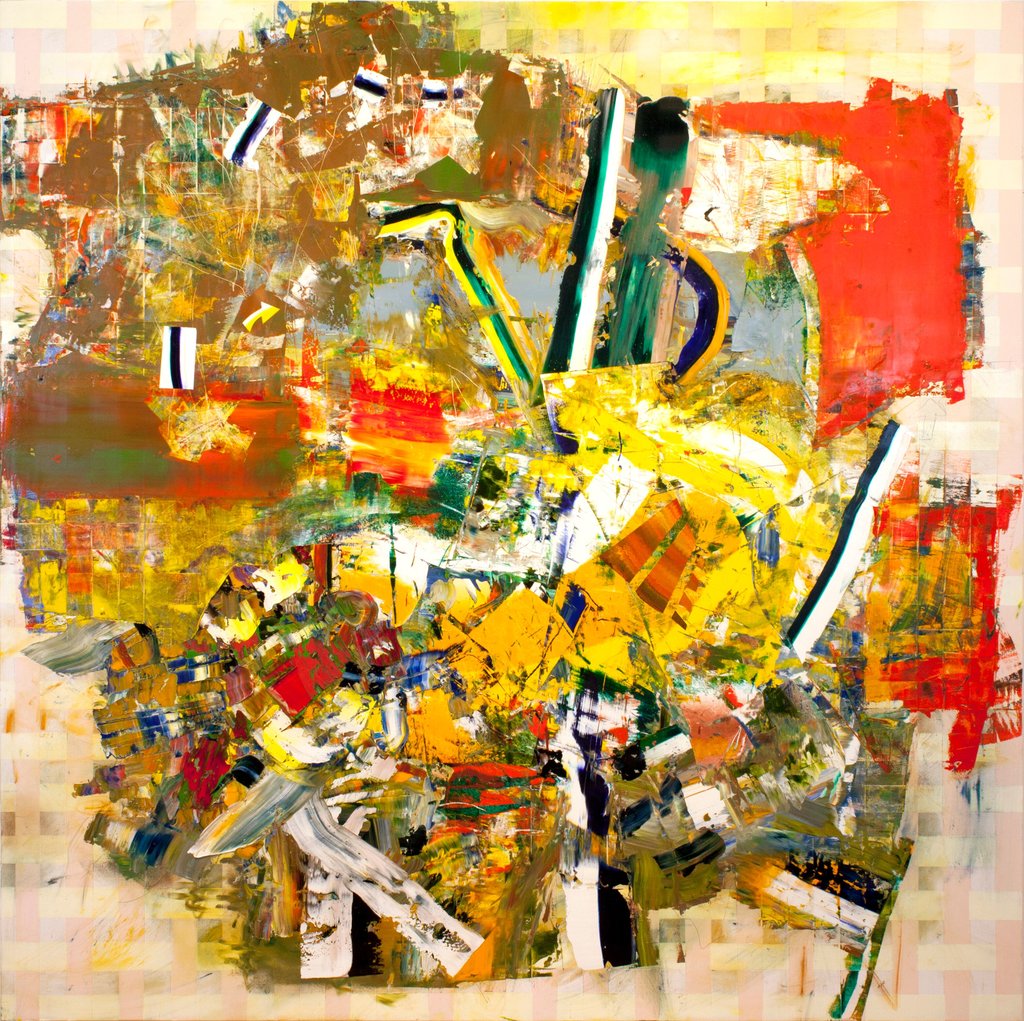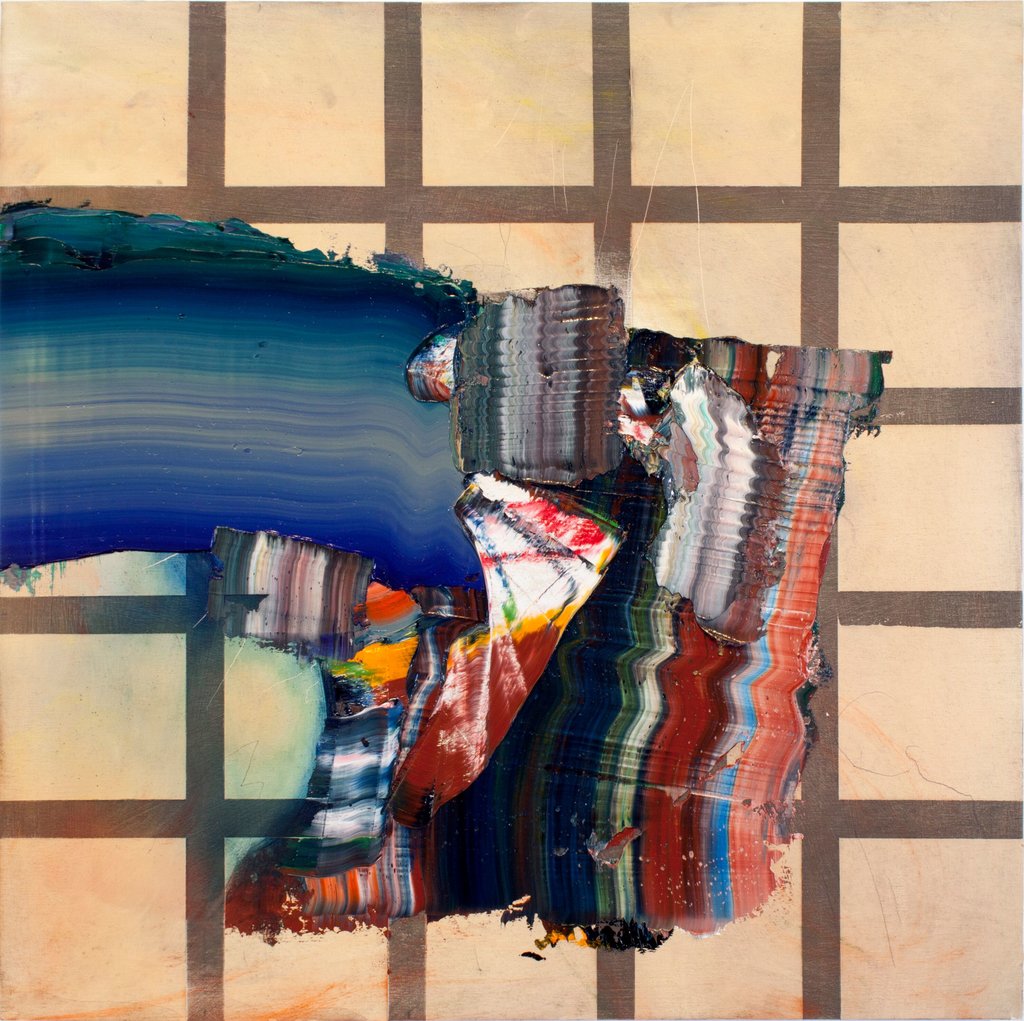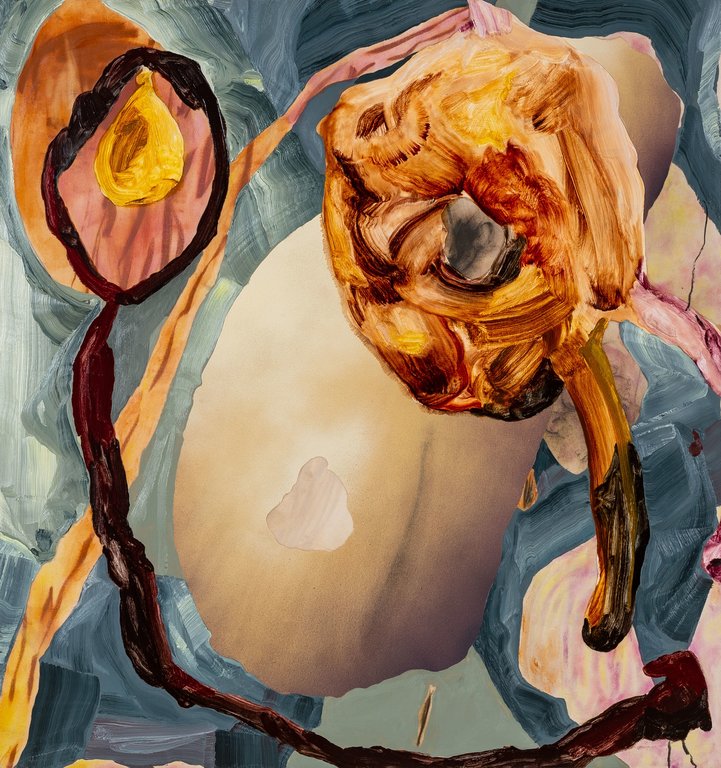Christopher Cutts Gallery is currently showcasing two young independent abstract painters described as being at the start of a journey. The south end of the gallery houses the works of Alexander Rasmussen. The north end is displaying works by Kristín Morthens. Morthens is a very recent graduate from OCAD University. Her seven paintings on display range in size from around 50 cm square to just over 2 m square. They are complex compositions that use a muted palette.
By comparison Rasmussen uses either primary colours directly or blends of them to produce rippled greys and browns using a palette knife. His seven oil and acrylic paintings on wooden boards are of similar sizes to Morthens. About a decade ago Rasmussen studied at Emily Carr University. He lives and works in the Niagara peninsula region. Morthens, originally from Iceland, now lives and works in Toronto. At first glance these artists’ works complement each other fairly well. Nonetheless they represent very different bodies of work.
One might say that abstraction is the easiest type of painting to do but the hardest to pull off. Historically it first flowered in the early twentieth century, driven by a desire to express the spiritual. Its originating artists such as Vassily Kandinsky and Hilma af Klimt were inspired by the theosophy of Helena Blavatsky. Early abstract artists wanted to paint what they saw as pure reality, which they generally took to be spiritual as opposed to material in nature. This is the world of perceptions, comprised in essence of the shapes, forms and colours by which we construct the external material world. It is in these formal qualities themselves that reality exists, not in the things they represent.
But a century or so later in our secular age, this religio-philosophical underpinning of abstract painting has largely disappeared. Nowadays all that remains for the abstract painter to do is to explore these formal qualities by means of technique. But an ineluctable truth about painting is that whatever the painter produces it will instil some sort of feeling or emotion in the painter or viewer more generally. It is this fact that the abstract expressionists, for example, exploited and that led to the masterpieces of the likes of Pollock and Rothko. But what is it about a painting like Pollock’s Number 32, with its violent splashes of black paint, that so enthrals the viewer? No one can know. An artist like Pollock could not explain how he achieved it. He fumbled in the dark in this respect, simply trusting the intuitive processes that guided his painting. It is this reliance on blind intuition that makes abstract painting so difficult to pull off. The two young abstractionists introduced to us in this show, therefore, have a tough row to hoe.
It is clear that Rasmussen is already some way on his journey into figuring out those techniques that give his paintings the desired emotional content. He juggles seemingly random applications of paint to produce an overall coherent composition. In part this is achieved by his first creating in the background a square grid pattern. On top of each grid he produces delectable passages of paint that almost shimmer. The most successful of these paintings is perhaps his Fat Chance with its strong colours and variedly textured surface.
The compositions in some of his paintings are less successful, I feel, because the beautiful scramblings of overpainting sit too tightly in the centre of his boards, making them rather static. And so a smaller painting titled Left Slide is more successful because the paint is scraped over to the very left edge of the board. At any rate Rasmussen is definitely on to something. These are riveting works of art.
There is little doubt that Morthens’ works are at an earlier stage in their evolution compared to Rasmussen. There is a rawness to her works. The characteristic feature of her paintings in this show is the translucency of the paint that results from its application on top of a glue-based ground. She first sketches the compositional outline with charcoal and pastel, and then applies oils and occasionally spray paint. She has an eye for composition. Her compositions are somewhat reminiscent of Kandinsky’s with bold arches and judiciously placed flat areas. A good example of this compositional intelligence is found in her Finder.
There is a wonderful playfulness to these works. Her two large paintings in particular seem a little overblown, as if they were straightforward enlargements of smaller works. Her work is refreshingly original. It is exciting to think of what she will produce in the future.
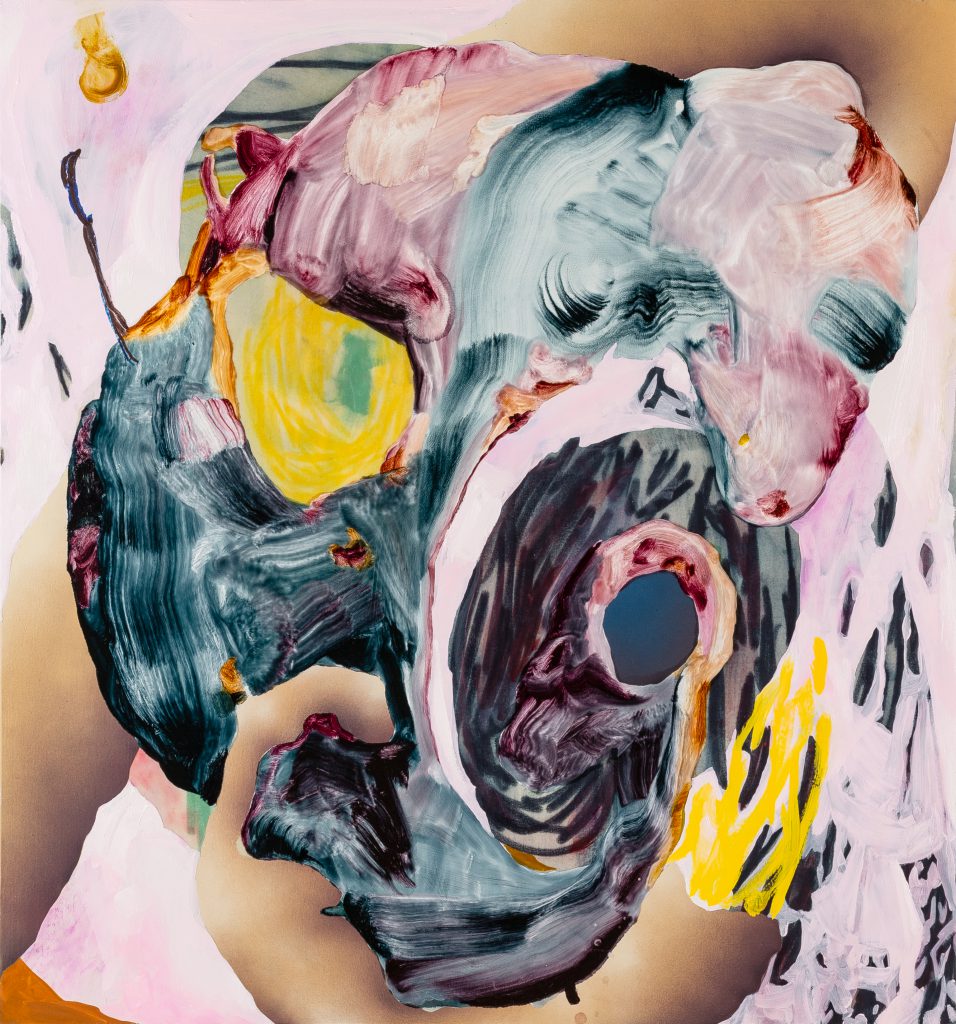
This is a wonderfully energetic exhibition of the works of two very talented young abstract painters. It bodes well for the future. Long live abstract painting.
Hugh Alcock
Images are courtesy of Christopher Cutts Gallery
*Exhibition information: Introducing Kristín Morthens and Alexander Rasmussen, March 30 – April 27, 2019, Christopher Cutts Gallery, 21 Morrow Ave, Toronto. Gallery hours: Tue – Sat 10 am – 6 pm.

